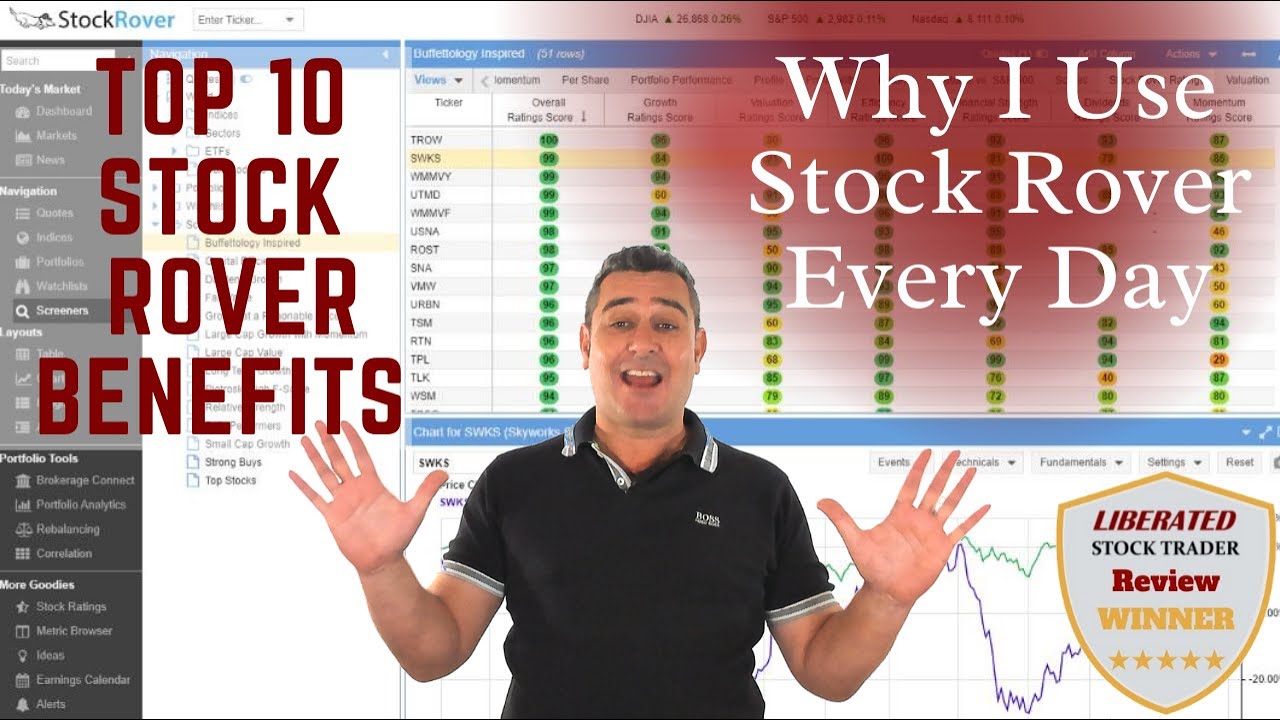Points in the stock, bonds, foreign exchange, or interest rate market can be confusing because they measure different things.
A one-point move in a stock price equals a one-dollar change. When someone says a stock is down two points, its price has declined by two dollars. Points in a stock index are similar to points in a stock, but instead of referring to the actual stock price, they refer to an index’s performance.
Read on to find out what points are in the stock market and finance.

What are Points in Stocks?
In individual stocks, a point move is the equivalent of $1 per share. When a stock’s price changes, the change is usually measured in points. For example, if a stock goes from $50 to $51 per share, that’s a one-point change or a 2% move. If a stock is worth $100 and moves to $101, it is a 1-point increase but equivalent to a 1% change.
A one point move in a stock is equal to a $1.00 price change
What are Points in a Stock Index?
Points in a stock index are the same as points in an individual stock. The price of a stock index is based on the prices of its constituent stocks, so when one or more stocks move, the index moves, too. For example, if the Dow Jones Industrial Average (DJIA) moves from 25,000 to 25,001, that’s a one-point change, $1 change, or a 0.004% move.
Similarly, if the S&P 500 moves from 3,000 to 3,001, that’s a one-point change or a 0.03% move.
A one point move in a stock market index is equal to a $1.00 price change
Example Chart: Nasdaq 100 Stock Index (QQQ)
See Stock Index Charts Live in TradingView
Why are Points Used for Stock Indexes?
Points are used to measure stock market index movement because they are a more precise way of measuring the value change. Since an index may have hundreds, if not thousands, of stocks included in its calculation, points allow for more accurate tracking and analysis.
Table: Points in Stock, Bonds & Currencies
| Asset | Unit | Equals |
| Stocks | Point | $1 |
| Stock Index | Point | $1 |
| Bonds | Basis Point | 0.01% |
| Futures | Basis Point | 0.01% |
| Currency | Basis Point | 0.01% |
| Interest Rates | Basis Point | 0.01% |
What Are Basis Points?
Basis points are used to describe changes in percentage terms. A basis point equals one-hundredth of a percent or 0.01%, so an increase of 10 basis points equals 0.10% or ten-one-hundredths of a percent.
For instance, if an interest rate rises from 2.50% to 2.75%, that’s an increase of 25 basis points. Basis points provide a standardized way to discuss tiny changes in rates and ratios that would otherwise be hard to articulate.
However, points and basis points become much more useful when measuring minute changes in alternative securities such as bonds, currencies, and interest rates.
Points vs. Basis Points
A point is a unit of measurement that denotes a change in a security’s price, yield, or value. A single point represents one-third of the currency or security’s total value. For example, if the XYZ stock rises from $50 to $51, it has risen by one point or 1%.
On the other hand, a basis point is an even smaller unit of measurement. A basis point equals one-hundredth (0.01) of a percent or 0.0001 in decimals. For example, if the XYZ stock rises from $50 to $50.01, it has risen by one basis point or 0.01%.
A basis point is also known as a “bps,” and in bonds, it describes the change in a security’s yield. For example, if the yield on a 10-year Treasury note increases from 3 percent to 3.50 percent, that’s a 50 basis point increase.
My thorough testing awarded TradingView a stellar 4.8 stars!
With powerful stock chart analysis, pattern recognition, screening, backtesting, and a 20+ million user community, it’s a game-changer for traders.

Whether you're trading in the US or internationally, TradingView is my top pick for its unmatched features and ease of use.
Explore TradingView – Your Gateway to Smarter Trading!
Points vs. Percentages
You may wonder, why not just use percentages instead of points or basis points? The answer lies in precision and consistency.
Consider this: a stock priced at $100 increases by $1. In terms of points, we’d say it rose by 1 point. In percentage terms, it’s a 1% increase. Now, if another stock priced at $200 also increases by $1, it’s still a 1-point increase, but in percentage terms, it’s only a 0.5% increase.
As you can see, points consistently measure absolute change, while percentages indicate relative change.
Points in the Bond Market
In the bond market, a point is also a unit of measurement, but it equals 1/100th of a percent or 0.01%. So, if a bond’s interest rate goes from 5% to 5.05%, that’s a five-point increase. This unit of measurement is most often used to describe changes in a bond’s yield, but it can also denote an increase or decrease in the bond’s price.
Example Bond Chart
See Bond Charts Live in TradingView
You want to be a successful stock investor but don’t know where to start.
Learning stock market investing on your own can be overwhelming. There’s so much information out there, and it’s hard to know what’s true and what’s not.
Liberated Stock Trader Pro Investing Course
Our pro investing classes are the perfect way to learn stock investing. You will learn everything you need to know about financial analysis, charts, stock screening, and portfolio building so you can start building wealth today.
★ 16 Hours of Video Lessons + eBook ★
★ Complete Financial Analysis Lessons ★
★ 6 Proven Investing Strategies ★
★ Professional Grade Stock Chart Analysis Classes ★
Basis Points in Foreign Exchange Currencies
Points in currencies refer to changes in the value of one currency versus another. A point is equivalent to 1/100th of a percent and is used to denote changes in the prices of securities. For example, if a security’s price goes up by one point, it has increased by 1/100th of a percent.
Example Currency Chart
See Forex Charts Live in TradingView
Points in currencies are the differences between the prices of two countries’ currencies. For example, if the US dollar is worth more than the Japanese yen, then the US dollar has a higher “point” value than the yen. Points can be traded in the foreign exchange market.
What are Points in Mortgages?
Similarly, in the world of mortgages, a basis point describes the change in interest rates. For example, if the interest rate on a 30-year fixed-rate mortgage increases from 4 percent to 4.50 percent, that’s a 50 basis point increase.
What are Points in Interest Rates?
Basis points are also used in the world of credit cards. For example, if the interest rate on a credit card increases from 15 percent to 15.50 percent, that’s a 50 basis point increase.
So, to sum up, a basis point is one hundredth of a percent. It’s a unit of measurement used to describe the change in a security’s yield, the interest rate on a mortgage, or the interest rate on a credit card.
In commodities, bonds, and interest rates, basis points are used to denote a 1/100th % change
How to calculate points in the stock market
In the stock market, points are calculated by taking the difference between the current price of a stock or index and its previous closing price. The difference is expressed in absolute terms (points) rather than as a percentage. For example, if Stock A had a closing price of $100 today and it had closed at $95 yesterday, the difference would be five points ($100 – $95 = 5 points). Points are typically used to measure short-term volatility and are often used in technical analysis.
For example, if the S&P 500 index has been trending upward for several days, traders may look for buying opportunities when it reverses and drops by more than five points from its previous closing price. Conversely, if the index has been trending downward and suddenly rises more than five points, traders may be wary of buying until it can be determined whether or not the move is a short-term reversal or part of a longer-term trend.
Investing In Stocks Can Be Complicated, Stock Rover Makes It Easy.
Stock Rover is our #1 rated stock investing tool for:
★ Growth Investing - With industry Leading Research Reports ★
★ Value Investing - Find Value Stocks Using Warren Buffett's Strategies ★
★ Income Investing - Harvest Safe Regular Dividends from Stocks ★

"I have been researching and investing in stocks for 20 years! I now manage all my stock investments using Stock Rover." Barry D. Moore - Founder: LiberatedStockTrader.com
Points are Not Percentage Points
It is important to note that points and percentage points are different. For example, a five-point move in a stock from $100 to $95 represents a 5% decline ($5 change / $100 starting price = 0.05 or 5%), while a five-point move in a stock from $20 to $15 represents a 25% decline ($5 change / $20 starting price = 0.25 or 25%).
It is important to consider the percentage move when evaluating potential trades to ensure that the expected return on investment (ROI) is appropriate for the risk involved.
It can be helpful to look at historical data and chart movements of an index to determine whether a five-point move represents a minor or major change in the market. This can give traders an idea of what kind of returns to expect from a particular trade and help them better prepare for possible outcomes.
Why not use Percentages rather than Points?
There are a few reasons why points are used in the stock market rather than percent. First, points are easier to calculate than percentages. Second, points provide more accurate information than a percentage when tracking minute changes in the price of a security over time. Third, points can be used to compare the prices of different securities.
Are percentages better than points?
While points are often used in stock trading, percentages can be useful when analyzing long-term trends. Percentages are also helpful in comparing different stocks or indices with each other since they provide a more accurate analysis of returns relative to the starting price. Ultimately, the best performance measure will depend on what type of information you need and how it will be used.
Summary
In conclusion, points and percentages are used when analyzing stocks or indices, but it ultimately depends on the situation to determine which is more accurate and useful.
Points are better for tracking minute changes in security prices over time, while percentages can provide a more accurate analysis of returns relative to the starting price when comparing different stocks or indices with each other.
Whatever measure you choose, drawing accurate information from stocks or indices is essential for making informed investment decisions. With this knowledge, you can make more educated choices and optimize your portfolio performance.

